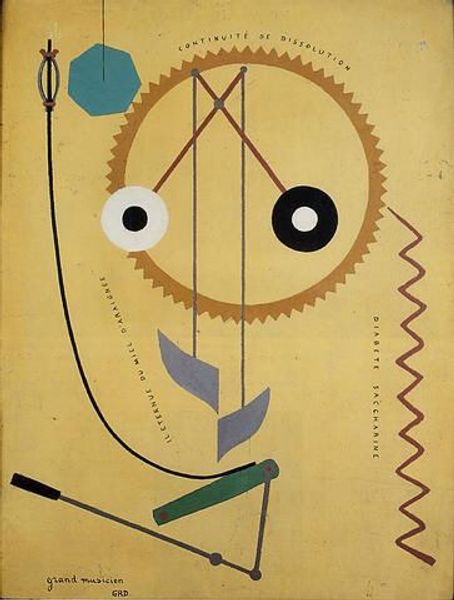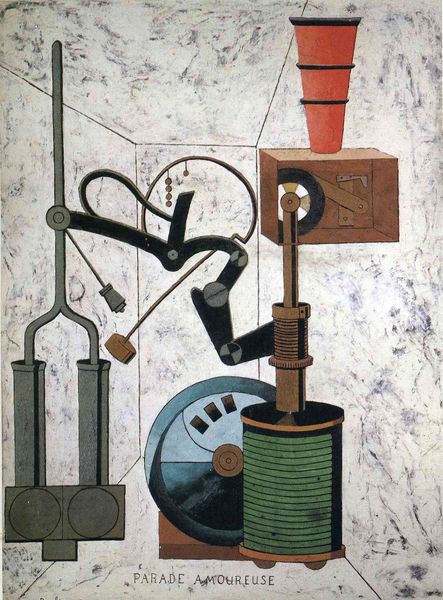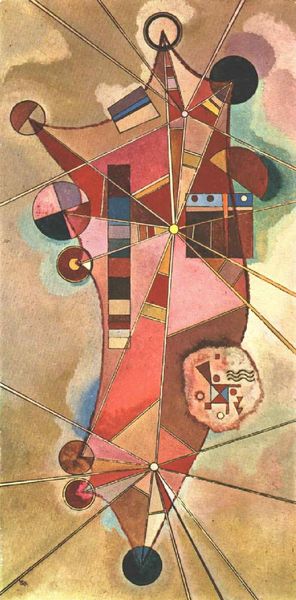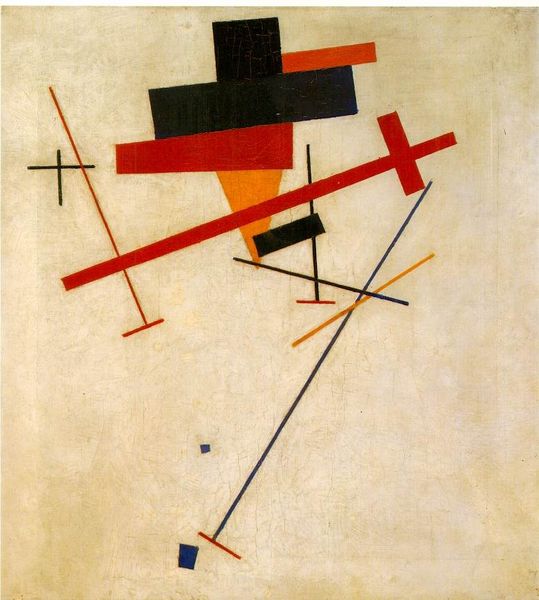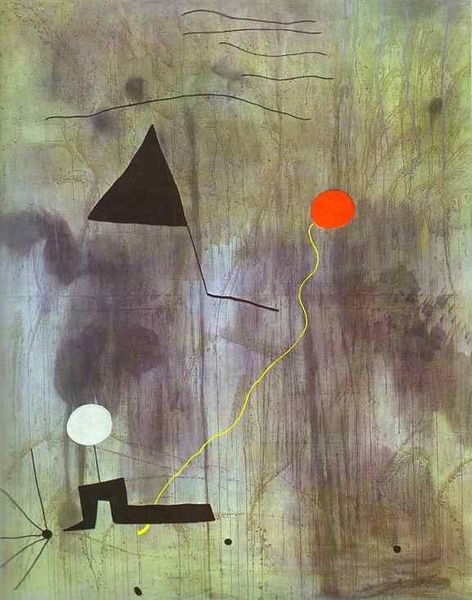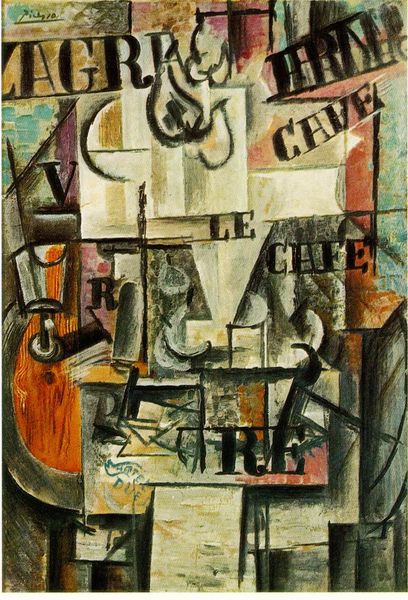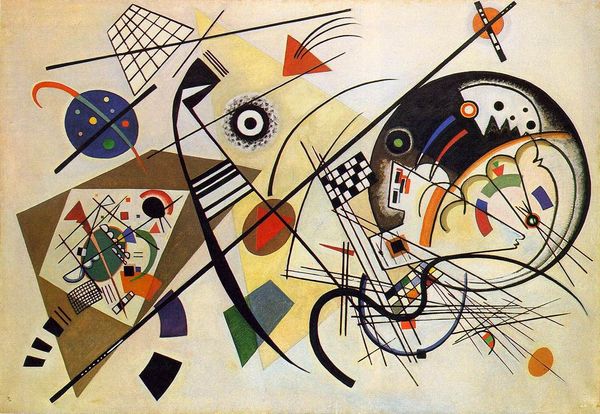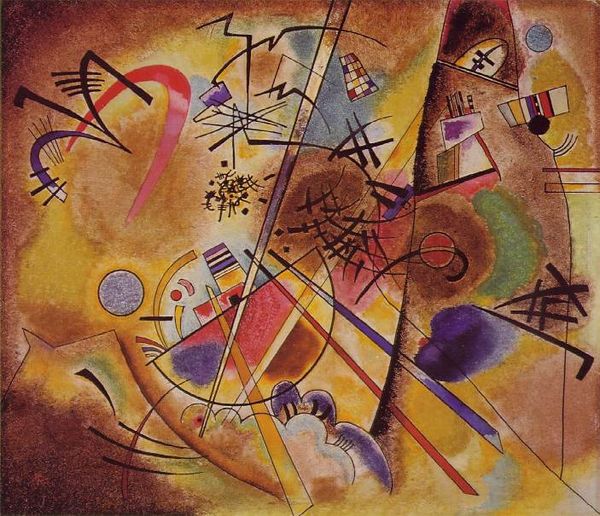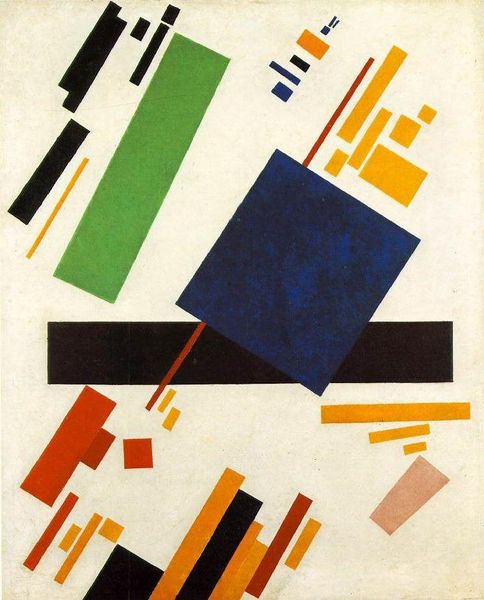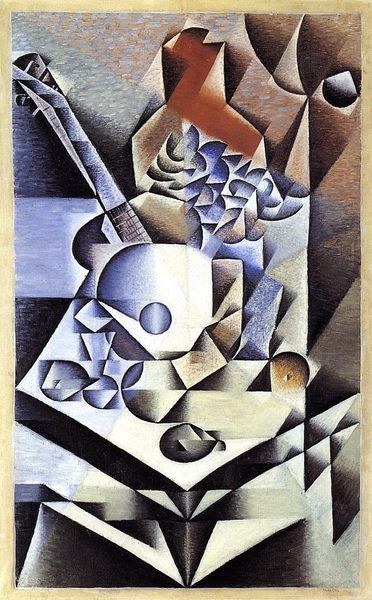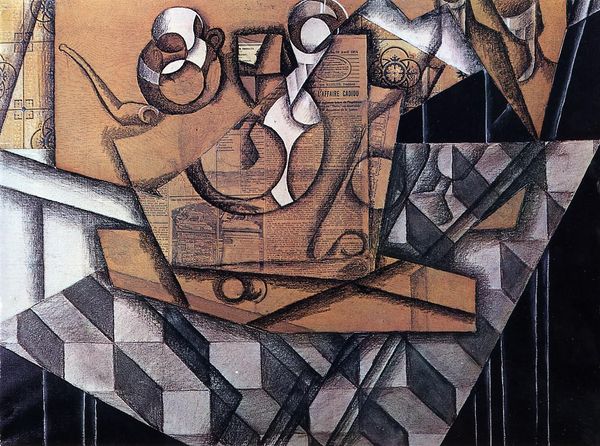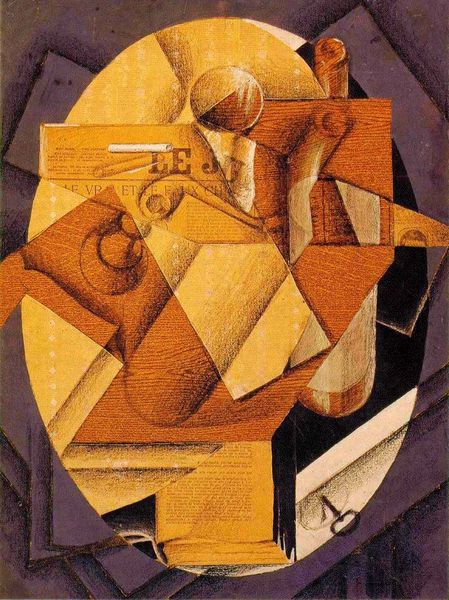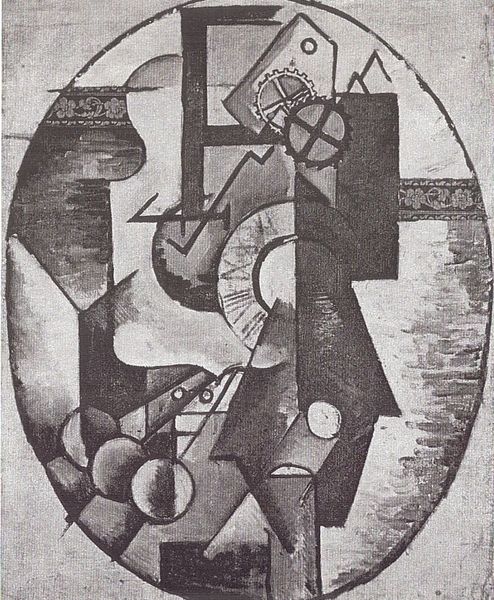
painting, oil-paint
#
metaphysical-art
#
painting
#
oil-paint
#
form
#
dada
#
geometric
#
abstraction
#
line
Dimensions: 60 x 44 cm
Copyright: Public domain US
Editor: We're looking at Francis Picabia’s "Balance" from 1919, done with oil paint. The title makes me think of a carefully constructed equilibrium, but visually, it feels more like a disassembled machine. How do you see this piece functioning, given its abstract nature? Curator: It's interesting that you bring up the idea of a disassembled machine. Considering Picabia’s Dadaist affiliations, and his interest in mechanical forms, I would ask, what is being balanced here? Look at the industrial components that he has depicted in the piece. Editor: So, not necessarily a literal balance of objects but the tension inherent in industrial production itself? The geometric forms suggest mechanical precision, but the muted colors and somewhat rough application of paint hint at something less refined. Curator: Exactly. Consider the labor involved in producing those geometric forms, versus the chaos of the Dada movement from which this work emerges. The piece is painted. Oil paint from 1919, of all the different possibilities of material processes. What impact does the specific labor of that time and place and material have on this work? Editor: The choice of oil paint also connects it to a longer tradition of art making, almost ironically given the Dadaist rejection of tradition. Curator: Precisely! He's challenging our understanding of value. By portraying machine-like elements with such a traditional medium, Picabia is also making a statement on the changing definition of labor in the industrial era. How it makes you reconsider how paintings are manufactured through particular labor practices. Editor: So, he's using the traditional craft of painting to critique the industrial processes disrupting traditional craftsmanship? That adds a layer of complexity I hadn't considered! Curator: Right, it pushes us to reflect on the social and material conditions shaping both artistic and industrial production. It allows you to trace how an artist reacts to their time. Editor: That makes me think about how we assign value, not just to the finished product but also to the process. Thank you.
Comments
No comments
Be the first to comment and join the conversation on the ultimate creative platform.
